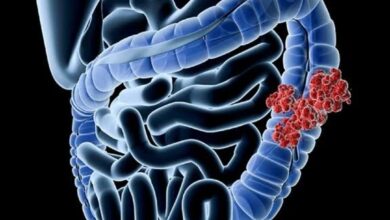An In-depth Overview of Protein Characterization Techniques

Integrating loads of amino acids in their make-up, proteins are complex molecules essential for cellular formation, growth, maintenance, and repair. Although most proteins bear semblance, they can vary in molecular structure, size, and physicochemical attributes. For efficient identification of these molecules, protein characterization is required.
Simply put, protein characterization is used to detect and isolate the various amino acids available in a specific protein. Protein characterization techniques like Mass Spectrometry give researchers the luxury of identifying and segmenting proteins with great detail.
This guide will look at the structural protein levels and major portion characterization techniques most protein expression services use.
Structural Levels of Protein
Before examining the unique protein characterization techniques, it’s important to understand the structural protein levels. There are four structural levels to protein, including:
- Primary
The primary structural level is the most basic protein structural level. This level comes in handy to explain the sequence of amino acids in a polypeptide chain.
Amino acid order is crucial, and even the slightest tilt can alter the course of a protein’s structure and function. For instance, an amino acid change in hemoglobin can cause single-cell anemia.
- Secondary
The secondary protein level denotes protein forms that curl alongside polypeptide chains during backbone atom interactions.
Typical secondary structures include the Beta pleated sheet and Alpha helix. Both forms are held in place by hydrogen bonds. While some single proteins might integrate one secondary structure, scientists from a leading protein expression company will encounter proteins with multiple secondary blueprints.
- Tertiary
A 3D (three-dimensional) polypeptide chain is formed at the tertiary level. This formation stems from the interaction of amino acid R groups. Upon interaction, non-covalent bonds develop.
Note that hydrophobic interactions can create 3D polypeptide chains (tertiary structures). Covalent disulfide bonds that link cysteine amino acids can also develop tertiary structures.
- Quaternary
Although some proteins are based on a single polypeptide chain, others might feature multiple chains. These multiple chains are tagged subunits that align to create a protein’s quaternary level.
A typical example of a protein that adopts a quaternary structure is a hemoglobin. This protein is responsible for transporting oxygen to crucial organs and tissues in the human body.
Primary Protein Characterization Techniques
Do you want to dig further into the characterization of proteins adopted by the standard protein expression service? Here are some special protein characterization techniques to note:
- Mass Spectrometry
Sophisticated tools like mass spectrometry have revamped the way laboratories group proteins. This protein characterization technique is useful for identifying post-translational modifications, also known as PTMs, to change a protein’s behavioral attributes.
Mass spectrometry helps scientists to detect the distinct protein characteristics using add-ons that can seamlessly identify spectra forms in their millions. Since scientists can identify thousands of peptides and proteins in a single application, mass spectrometry makes PTM detection smooth sailing.
- Amino Acid Analysis
Amino acid analysis usually complements protein characterization. This technique allows researchers to get a detailed insight into select protein attributes. For example, labs use chromatographic techniques to detect, isolate, analyze, quantify, and group amino acids.
- Gel Electrophoresis
Gel electrophoresis heavily relies on the movements observable in an electric field for protein separation (by molecular structure).
When proteins encounter an electric field, they tend to unfold. They’re also coated due to the negative charge. These actions, in turn, make proteins separate and move towards a positive charge.
Afterward, proteins are redirected to a membrane that can be analyzed solely by several techniques, including Western blotting. Also referred to as immunoblotting, this technique adopts a three-step process to detect individual proteins.
Here, characterization is actualized by injecting an antibody specific to the protein targeted during the experiment. After this, molecular bands featuring the target protein attach themselves to the antibody, thereby facilitating a color change.
- Dynamic Light Scattering (DLS)
Dynamic light scattering is a technique that has amassed so much popularity in the last decade due to its simplicity and user-friendly nature. Unlike other protein characterization techniques, DLS issues results minutes after the initial experiment without requiring numerous samples.
Besides characterizing sample size, the DLS comes to the fore when unlocking distribution data without initial separation. This attribute allows the DLS technique to be ideal for varying applications, ranging from high range particle dispersion to low nanometer polymer solutions.
- Trapped Ion Mobility Spectrometry
Trapped Ion Mobility Spectrometry (TIMS) is a gas-phase technique engaged by the standard e coli protein expression service to get an expansive molecular weight signal range.
TIMS is used to separate ions in terms of their mobility. It also delivers collision cross section (CCS) data that’ll help researchers to attain increased specificity in protein analysis.
Major Takeaway
As the biomedical sector advances, the techniques used to characterize proteins must follow a similar path. Protein mapping is vital as it aids drug development and creates mediums crucial in detecting illnesses at their early stages.
Due to the importance of protein characterization, regulatory bodies and manufacturers must come together to answer the nagging question — how characterized is well characterized?
Read More: How To Find The Best Ecommerce Website Design Services





